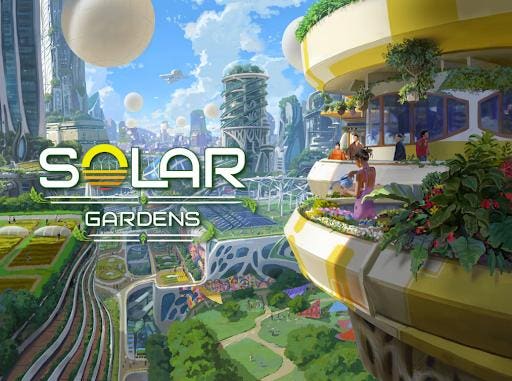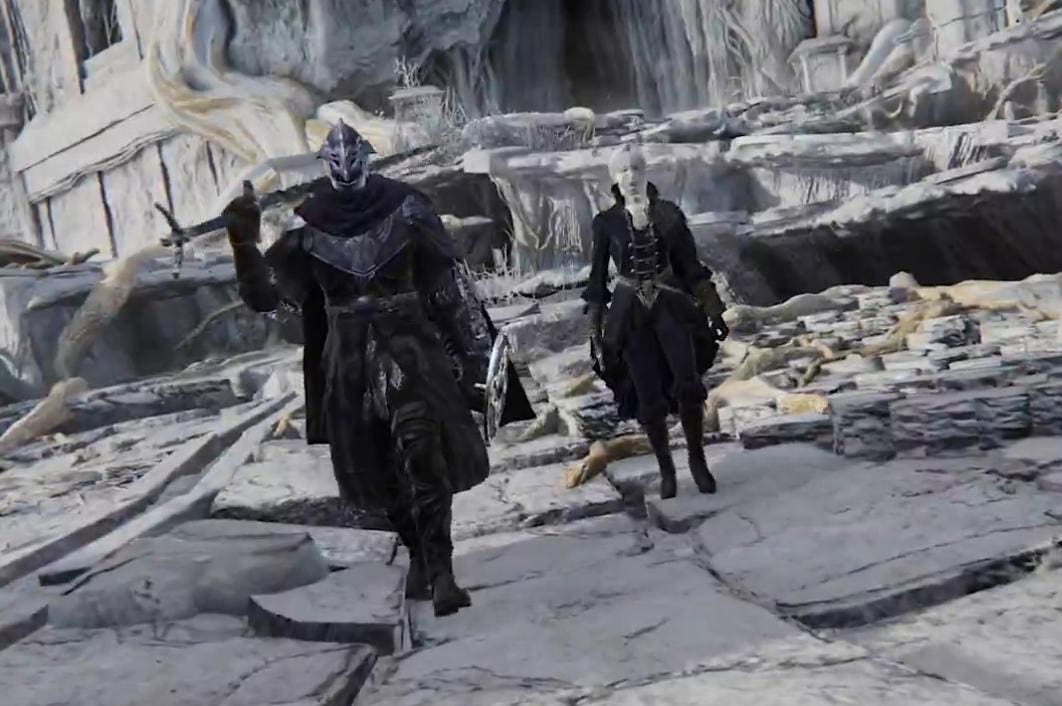Shinobi: Art of Vengeance
Sega
Shinobi: Art of Vengeance released last week and you can read all about it in my review. The quick and dirty synopsis is that I think it’s an amazing game, a fantastic revival of one of gaming’s oldest heroes, and a very strong sign for what may be in store for the future of Sega’s franchises. Or, in short, I’m a big fan.
The Sega published and Lizardcube developed action platformer is one of my favorite games of the year, so when Sega also offered me the chance to send over some questions to the development team I obviously jumped at the opportunity. I mostly focused on asking them about the game’s inspiration, the design decisions made to modernize Shinobi for new audiences, and any difficulties that arose through that process.
Shinobi—Reviving a Gaming Icon
Shinobi as a game series has been around for nearly 40 years. There are very few franchises that can claim the same. It’s been over a decade since the last Shinobi game, with 2011’s Shinobi 3D on 3DS having that honor. Now, the ninja is finally back.
With such a big gap between releases, why was now determined to be the right time?
“As big SEGA fans, Lizardcube started its work with the revival of Wonder Boy and Streets of Rage 4, which were both very successful releases,” Creative Director for Shinobi: Art of Vengeance and CEO of Lizardcube, Ben Fiquet, said in an email. “So naturally, this led to having a new conversation with SEGA as they were hoping to bring back other older IPs. We proposed a new project for Shinobi, which is one of our favorite game licenses from the SEGA universe.”
Naturally, bringing back the series—and maintaining that original 2D style—was a big decision.
“I am very attached to 2D animation as an artform, especially in video games,” Fiquet said. “This is also what Lizardcube excels at. But ultimately, we wanted to give the fans and new players the same excitement for when they could play the original games, and side scrolling is deeply imbued in that nostalgia.”
It’s an interesting approach, because many of the last few Shinobi games were 3D action games. But returning to its origins, in a lot of ways, seems to have paid off. I gave the game a 9 in my review and it’s currently sitting at an 87 overall on Metacritic as of the time of this writing. That’s tremendous.
Shinobi: Art of Vengeance
Sega
“SHINOBI was the most popular during the Genesis hardware era as a 2D game,” Chief Producer for Shinobi: Art of Vengeance at Sega, Toru Ohara, said in an email. “In particular, the period around The Super Shinobi (The Revenge of Shinobi in English, I believe) was when the series was at its peak, so we wanted to put the spotlight back on that era. [And,] we were able to partner with Lizardcube. Lizardcube specializes in 2D action games and were very high[ly] praised for their work in Streets of Rage 4. To make the most of their forte, we felt that creating a 2D platform action game had the greatest potential for something truly exciting.”
Personally, I grew up playing the aforementioned Revenge of Shinobi, as well as Shinobi III: Return of the Ninja Master, and Shadow Dancer on Sega Genesis quite often. I have a ton of memories of making my way through those levels and jamming out to the amazing soundtracks.
“While SHINOBI: Art of Vengeance borrows heavily from these past games, this is a very modern take for the franchise,” Fiquet said. “We tried to have this particular vibe that we all felt in the 90’s but the gameplay is more action packed, with more exploration and a longer playtime.”
Ohara added that, “SHINOBI: Art of Vengeance is by no means a direct imitation of the past titles…we wanted to create something new and exhilarating, a sort of free-flowing nonstop battle action that can be enjoyed by players who are unfamiliar with the original games too. On the other hand, we have also incorporated aspects that pay respect to the classics, such as keeping it to a 2D action game, preserving the unique ‘modern ninja’ setting, as well as characters and enemies from the earlier titles. Above all, we believe that the return of Joe Musashi himself is something that will delight longtime fans of the series.”
Shinobi: Art of Vengeance
Sega
Shinobi—Adapting to Modern Game Design
As we’ve seen time and time again though, simply trying to recapture the past isn’t going to work out. Nostalgia plays a huge factor in why many games from the 80s and 90s are still celebrated and loved to this day, so preying on that nostalgia can only take you so far. New games needs to appeal to new audiences as well.
“We felt that we needed to create a game that could be embraced by both players who have a deep love for the original title and modern players who may not know SHINOBI at all,” “Deciding which parts to preserve and which parts to reinvent was a tough question. In truth, it’s impossible to create something that will satisfy 100% of all players, but I believe that this new SHINOBI is one that both groups of players can enjoy.”
One of the best ways to do that is to look towards what’s working right now and figuring out how to adapt and iterate on that for something fresh.
“It’s always a fine line to walk when reviving such an iconic game,” Fiquet said. “Trying to keep that 90’s energy without falling into something that might feel outdated. Modernizing the gameplay was also a very difficult task, but I’m glad my team and SEGA’s worked hand in hand to provide the best we could…we used our knowledge of sides rollers and beat ‘em ups particularly since working on Streets of Rage 4, but we also drew inspiration from games like Devil May Cry 5 or fighting games for combat or Hollow Knight for traversability.”
Even if you only play the demo for Shinobi: Art of Vengeance, those inspirations are immediately apparent in all of the best ways. Visually, it’s like a painting come to life with incredible animations and gorgeous backdrops, punctuated by fast, frenetic, and ferocious combo-driven combat complete with aerial juggling that really would feel right at home in a 2D Devil May Cry game.
“Our vision for the game emphasizes spectacular action and fluid combat, built around the core idea of constant player movement,” Fiquet said. “We aimed for a seamless blend of platforming and beat ’em up elements, allowing effortless transitions between phases. Joe Musashi’s agility is central to his combat style, offering diverse offensive and defensive options for strategic positioning. Players will rarely face a single enemy, demanding constant environmental awareness and careful target prioritization. While staying true to the original games, we significantly expanded Joe Musashi’s moveset. Many iconic abilities, such as the divekick, have been retained and adapted to seamlessly integrate with the new combat system.”
Compared to a game like this year’s Ninja Gaiden: Ragebound, Shinobi: Art of Vengeance is an example of how games that appear similar on their face, can actually be dramatically different once you play them. Both are excellent interpretation of classic ninjas, but they could hardly be more different than they are. And that’s great!
“In today’s action games, I believe that having good controls and a satisfying feel of gameplay are extremely important elements,” Ohara said. “Lizardcube also values that sense of control and feel in the gameplay, and so the philosophy of the game design is Joe Musashi, the protagonist, is able to keep moving without ever having to stop. My background is originally in game design, and while I recognize it is common practice to add recovery times to moves or restrictions on behavior to maintain game balance, instead of resorting to those methods, we stuck to the conviction that we absolutely need to maintain a continuous sense of exhilaration and freedom in the controls. I also felt that this approach was very fitting for the way of a ninja. As a result, I’ve heard that players who have experienced the game have evaluated it for its great sense of exhilaration, so I’m glad that Lizardcube and I stayed true to that vision.”
Given how fast and powerful Joe Musashi is as a character, it can be very difficult to design a game that feels challenging and rewarding around him.
“As a result of making sure that Joe Musashi, the protagonist, can be played smoothly and stress-free, we ended up creating an extremely powerful player character,” Ohara said. “The real challenge, of course, was then creating enemies and gimmicks that could pose a threat to the now all-powerful Joe Musashi. We were also concerned that this could raise the difficulty of the game to the point that we would risk attrition of players who are potentially not as skilled in action games. Initially, we were not thinking to implement any difficulty settings, but we did decide in the end to add a feature that allows for adjustment of difficulty for those who seek a more forgiving player experience.”
Shinobi: Art of Vengeance
Sega
I think they absolutely nailed the balance, personally, as you can make the game just as fast and fun as you’d like. While you’re given tons of opportunity to upgrade and customize your fighting style, you can also rely mostly on basic moves and attacks for most of the game if it’s too overwhelming.
“SHINOBI: Art of Vengeance was created as a revival of a classic SEGA IP,” Ohara said. “However, as mentioned earlier, our goal was to make a game that both longtime fans and new players could enjoy. For the fans of the original series, I hope they’ll be excited to see the return of Joe Musashi, and that they’ll have a lot of fun spotting various homages to past titles that are hidden in the stages and enemies. For those who are unfamiliar with the earlier games, I hope they’ll dive into and enjoy the exhilarating, free-flowing, nonstop battle action and platforming. For both veteran and new fans, I believe the combat in this game delivers a fresh sense of enthrallment that you won’t find in other 2D action titles.”
Shinobi: Art of Vengeance is out now on PlayStation 5, PlayStation 4, Xbox Series X|S, Xbox One, PC, and Nintendo Switch for $29.99, plus you can check it out for free via the demo.









